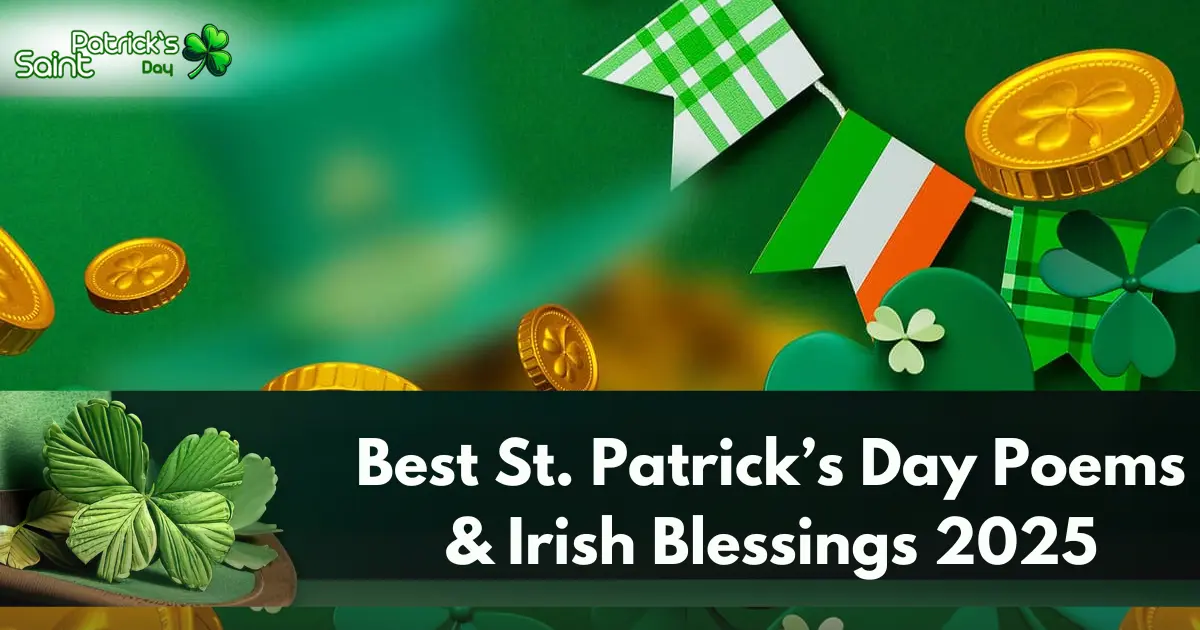St. Patrick’s Day poems celebrate Irish heritage, history, and traditions through powerful verses. These poems express faith, joy, and the festive spirit of March 17th.
Poetry plays a vital role in Irish culture, reflecting deep emotions and storytelling traditions. Whether inspired by St. Patrick himself, Irish folklore, or the beauty of Ireland, these poems bring people together to honor the nation’s identity.
The Significance of St. Patrick’s Day Poems
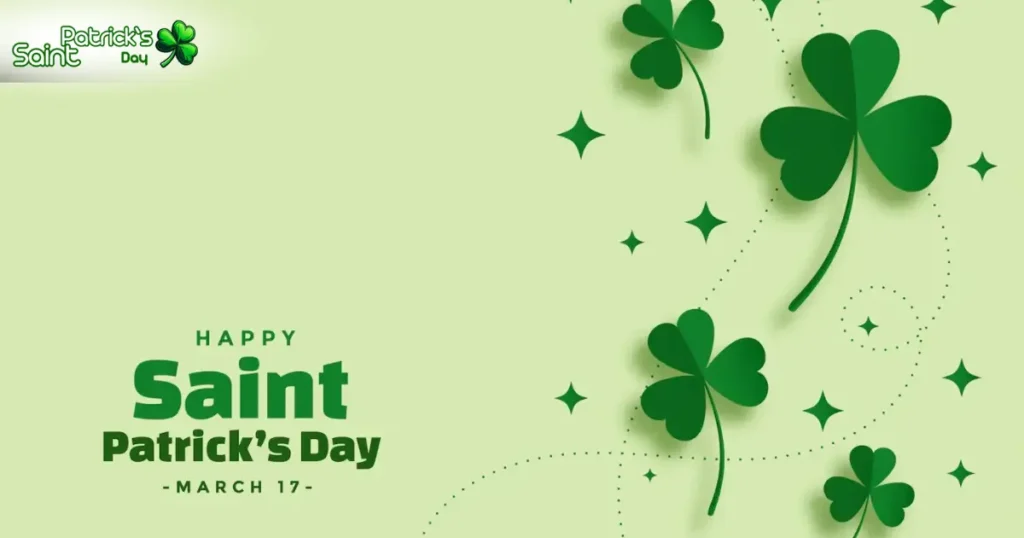
St. Patrick’s Day poems are more than just words on paper—they hold historical, cultural, and spiritual value for the Irish people and the global Irish diaspora.
A Reflection of Irish Heritage and History
- Ireland has a rich literary tradition, with poets like W.B. Yeats, Seamus Heaney, and Oscar Wilde contributing to global literature.
- St. Patrick’s Day poems often pay tribute to Ireland’s struggle, victories, and unwavering spirit.
- Some poems depict St. Patrick’s journey, how he brought Christianity to Ireland, and the symbolism of the shamrock.
Celebrating Faith and Spirituality
- Many traditional poems focus on blessings, prayers, and gratitude.
- Christian-themed poetry often highlights St. Patrick’s missionary work and Ireland’s deep connection to faith.
- Examples of Irish blessings and religious verses include:
- “May the road rise up to meet you, may the wind be always at your back.”
Capturing the Festive Spirit of St. Patrick’s Day
- Beyond faith, St. Patrick’s Day is a joyous celebration filled with music, dancing, and parades.
- Many poems embrace laughter, friendship, and the pride of being Irish.
- Example: Some modern poets write humorous verses like:
- “A pint of Guinness, a tale to tell, let’s toast to Ireland, and wish all well!”
Traditional St. Patrick’s Day Poems and Irish Blessings
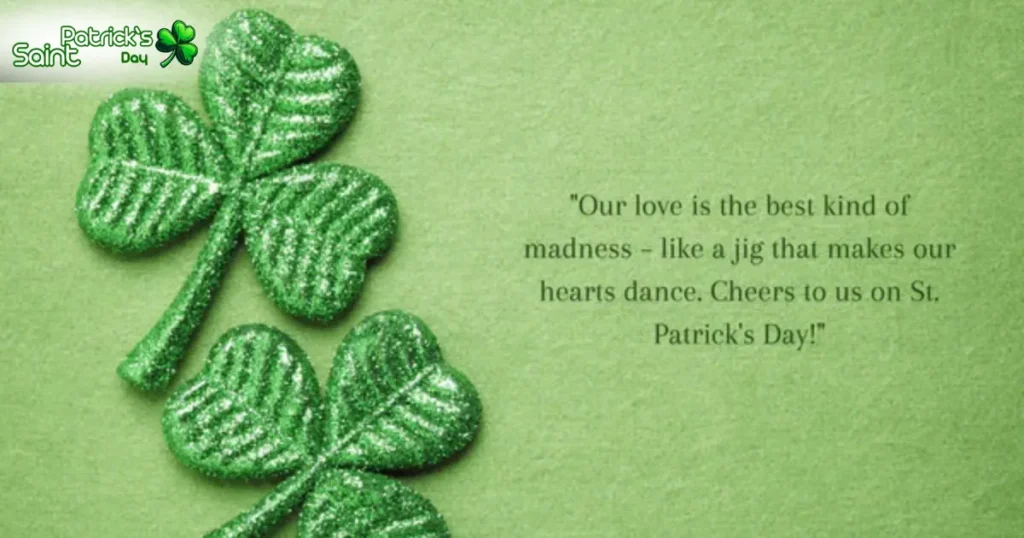
Irish poetry and blessings have been passed down for generations, reflecting wisdom, love, and good fortune.
Classic Irish Blessings
Some of the most well-known Irish blessings are often recited as poems during St. Patrick’s Day gatherings:
✅ “May Your Troubles Be Less”
“May your troubles be less, and your blessings be more,
And nothing but happiness come through your door.”
✅ “A Blessing for Friends”
“May love and laughter light your days,
And warm your heart and home.
May good and faithful friends be yours,
Wherever you may roam.”
✅ “An Irish Wish”
“May you always walk in sunshine,
May you never want for more,
And may Irish angels rest their wings,
Right beside your door.”
Famous Irish Poets and Their Influence on St. Patrick’s Day
Many famous poets have contributed to Ireland’s poetic legacy, and their works are often referenced in St. Patrick’s Day celebrations.
- William Butler Yeats – His lyrical poems often describe Ireland’s beauty and legends.
- Seamus Heaney – A Nobel Prize-winning poet who captured Ireland’s landscapes and struggles.
- John O’Donohue – Known for spiritual and reflective poetry, often quoted in blessings.
Modern St. Patrick’s Day Poetry Trends
While traditional Irish poetry remains popular, modern poets have also contributed to St. Patrick’s Day celebrations.
Social Media and Digital Poetry
- Many poets now share short, impactful St. Patrick’s Day verses on social media.
- Instagram and Twitter feature bite-sized blessings perfect for sharing.
- Example: “Green is the color, joy is the way, let’s celebrate St. Patrick’s Day!”
Humorous and Light-Hearted Poems
- Limericks are a popular Irish poetic form, often humorous and witty.
- Example:
- “There once was a lad from Kildare,
Who danced with a shamrock in air.
He sipped on some stout,
Then let out a shout,
‘St. Paddy’s brings joy everywhere!'”
- “There once was a lad from Kildare,
The Origins of St. Patrick’s Day Poetry
The tradition of writing St. Patrick’s Day poems has deep historical roots, dating back centuries. These poems evolved from oral storytelling, religious hymns, and folklore, shaping Ireland’s literary culture.
Ancient Celtic Poetry and Oral Tradition
Before written records, Celtic poets (bards and druids) played a crucial role in preserving Irish history and legends through poetry.
- Bards were highly respected figures who composed songs and epic poems about Irish heroes.
- These poems often featured themes of bravery, mythology, and nature, some of which influenced later St. Patrick’s Day verses.
- Example: Early poems praised St. Patrick as a warrior of faith, similar to legendary Celtic heroes.
Medieval Irish Poetry and Religious Influence
As Christianity spread in Ireland, poetry took on a more spiritual tone, with monks and scholars writing hymns and blessings dedicated to St. Patrick.
- St. Patrick’s own writings, such as The Confession of St. Patrick, inspired many religious poems.
- Medieval Irish manuscripts, like the Book of Kells and Lebor Gabála Érenn (The Book of Invasions), contained religious poetry honoring saints and Irish legends.
- Many Irish blessings originated from this period and are still recited today.
The Renaissance and the Golden Age of Irish Poetry
During the 16th-18th centuries, Irish poets like Aogán Ó Rathaille and Tadhg Dall Ó Huiginn wrote about:
- Irish identity and pride, often weaving St. Patrick’s Day themes into their works.
- Political struggles, using poetry as a way to inspire unity among the Irish people.
- Faith and resilience, highlighting St. Patrick as a symbol of hope and endurance.
The Evolution of St. Patrick’s Day Poetry in Modern Times
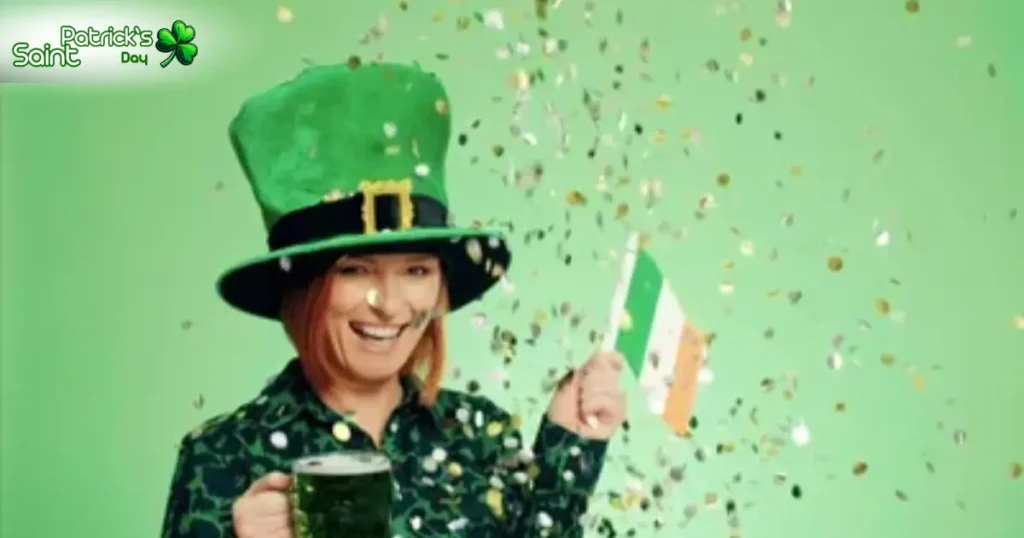
Over the years, St. Patrick’s Day poetry has adapted to reflect changing cultural trends, from religious prayers to humorous limericks and pop culture references.
19th & 20th Century Irish-American Influence
As millions of Irish immigrants settled in the U.S., St. Patrick’s Day poetry expanded:
- Irish-American poets wrote about their homeland and longing for Ireland.
- Publications in newspapers featured poems, prayers, and patriotic verses for Irish-Americans.
- St. Patrick’s Day parades included poetry recitals as part of the celebration.
21st Century Poetry and Digital Transformation
With the rise of social media and digital literature, St. Patrick’s Day poems have found a new audience:
- Online blogs, Instagram, and Twitter feature short, shareable St. Patrick’s Day verses.
- Poetry competitions and spoken word events celebrate Irish heritage worldwide.
- Modern poets blend humor, nostalgia, and contemporary themes into their verses.
Famous St. Patrick’s Day Poems and Their Meanings
Here are some notable poems associated with St. Patrick’s Day, each carrying a unique meaning.
“St. Patrick’s Breastplate” – A Powerful Ancient Hymn
- One of the most famous Irish prayers, attributed to St. Patrick himself.
- A prayer of protection, asking for divine guidance and strength.
- Excerpt:
“Christ be with me, Christ within me,
Christ behind me, Christ before me.”
“An Irish Blessing” – A Symbol of Good Fortune
- Often recited as a toast or farewell during St. Patrick’s Day gatherings.
- Emphasizes friendship, prosperity, and happiness.
- Excerpt:
“May your pockets be heavy and your heart be light,
May good luck pursue you each morning and night.”
“The Wearing of the Green” – A Song of Irish Patriotism
- Written during the Irish Rebellion of 1798, symbolizing freedom and national pride.
- Encourages Irish people to wear green as a sign of solidarity.
- Excerpt:
“Oh, Paddy dear, and did you hear the news that’s going ‘round?
The shamrock is by law forbid to grow on Irish ground.”
How St. Patrick’s Day Poems Inspire Modern Writers
Poetry remains a vibrant part of St. Patrick’s Day celebrations, influencing both established and emerging poets.
Poetry as a Means of Irish Cultural Expression
- Writers use poetry to preserve Irish stories and heritage.
- Many poets blend history, humor, and modern life into their work.
- Example: A contemporary poem might mix traditional blessings with modern references, such as:
“With laughter and love, we toast today,
May joy be yours this St. Patrick’s Day!”
The Rise of Irish Poetry Events and Competitions
- Many schools and literary organizations hold poetry contests for St. Patrick’s Day.
- Irish cultural festivals showcase spoken word performances of classic and modern poetry.
- Example: At the Dublin Literary Festival, poets recite works celebrating Irish pride and history.
How to Write a St. Patrick’s Day Poem
St. Patrick’s Day poetry can be humorous, heartfelt, or spiritual, depending on the tone you want to convey. Whether you’re writing a blessing, limerick, or a narrative poem, follow these steps to create an authentic Irish-inspired verse.
Step 1 – Choose a Theme for Your Poem
A strong poem begins with a clear theme. Common St. Patrick’s Day poetry themes include:
✅ Faith and Blessings – Inspired by St. Patrick’s legacy and Irish spirituality.
✅ Irish Pride and Patriotism – Honoring Ireland’s rich history and traditions.
✅ Friendship and Family – Toasting to good health and lasting bonds.
✅ Humor and Celebration – Fun, witty poems that capture the joy of St. Patrick’s Day.
Step 2 – Select a Poetic Structure
Different styles of poetry can bring your words to life. Here are a few popular Irish poetic forms:
✅ Limericks – Five-line poems with a funny or playful twist.
✅ Rhyming Couplets – Two-line verses that flow smoothly and are easy to recite.
✅ Irish Blessings – Short poetic wishes focused on happiness and fortune.
Step 3 – Use Traditional Irish Symbols in Your Poem
Adding Irish imagery makes your poem more authentic. Consider including:
✅ The Shamrock – Symbolizing faith, hope, and love.
✅ The Leprechaun – Representing luck and mischief.
✅ The Emerald Isle – A poetic term for Ireland’s beautiful landscapes.
✅ The Celtic Cross – Signifying heritage and spirituality.
Step 4 – Create a Catchy Opening Line
Your first line sets the tone of the poem. Here are a few examples:
- Blessing: “May the luck of the Irish shine bright on your way.”
- Limerick: “There once was a lad from Kildare, who danced with a shamrock in air.”
- Patriotic: “Ireland’s hills are green and grand, a land of wonder, strong and stand.”
Original St. Patrick’s Day Poem Examples
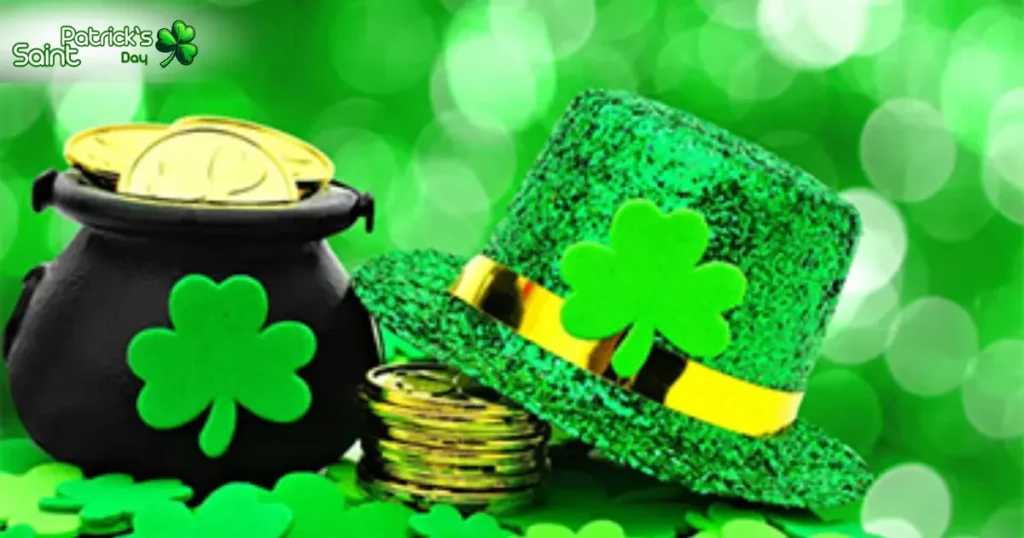
A Heartfelt Irish Blessing Poem
“May the sun warm your face, may your troubles be few,
May your heart hold a song, and your skies stay blue.”
“May your days be filled with laughter and cheer,
And may the luck of the Irish be with you all year!”
A Fun St. Patrick’s Day Limerick
“A leprechaun danced in the square,
With gold coins he tossed in the air,
He laughed with delight,
On St. Paddy’s bright night,
As joy spread from Dublin to Clare!”
A Poem Honoring St. Patrick’s Legacy
“In ancient days, across the sea,
A young boy prayed on bended knee,
Through storm and trial, he found the way,
And so we honor him today.”
More Traditional Irish Blessings for St. Patrick’s Day
Irish blessings have been a part of the culture for centuries. Here are some of the most beloved St. Patrick’s Day blessings:
✅ A Blessing for Happiness
“May your troubles be less and your blessings be more,
And nothing but happiness come through your door.”
✅ A Blessing for Friendship
“May the roof above us never fall,
And may we friends beneath it never fall out at all.”
✅ A Blessing for Love
“May you have all the happiness and luck that life can hold,
And at the end of your rainbows, may you find a pot of gold.”
St. Patrick’s Day Poems in Music and Pop Culture
St. Patrick’s Day poetry isn’t limited to written verse—it has also found a home in music, film, and literature.
Irish Folk Songs That Started as Poems
Many famous Irish songs began as poetry before being set to music:
- “Danny Boy” – Originally written as a poem in 1910, later turned into a classic Irish ballad.
- “The Wild Rover” – A traditional Irish drinking song with rhyming poetic lyrics.
- “Molly Malone” – A folk song with poetic storytelling, beloved in Dublin.
St. Patrick’s Day Poetry in Movies & Literature
- Movies like “Brooklyn” and “The Quiet Man” feature Irish poetry and storytelling.
- Famous authors like James Joyce and W.B. Yeats referenced St. Patrick and Irish folklore in their works.
- The modern rise of Irish poetry collections and greeting card verses keeps the tradition alive.
Conclusion
St. Patrick’s Day poetry is more than just rhymes and verses—it’s a way to connect with history, celebrate culture, and bring people together.
FAQs
A St. Patrick’s Day poem is a verse or blessing that celebrates Irish culture, history, and traditions. It can be religious, humorous, or heartfelt.
Popular poems include “St. Patrick’s Breastplate,” traditional Irish blessings, and humorous limericks. Many classic Irish folk songs also started as poems.
Choose a theme (faith, humor, Irish pride), use simple rhymes, and include Irish symbols like the shamrock, leprechauns, and green landscapes.
Irish blessings are a way to wish happiness, health, and good fortune to family and friends, keeping Ireland’s poetic traditions alive.
“May the road rise to meet you,
May the wind be always at your back,
May the sun shine warm upon your face.”
